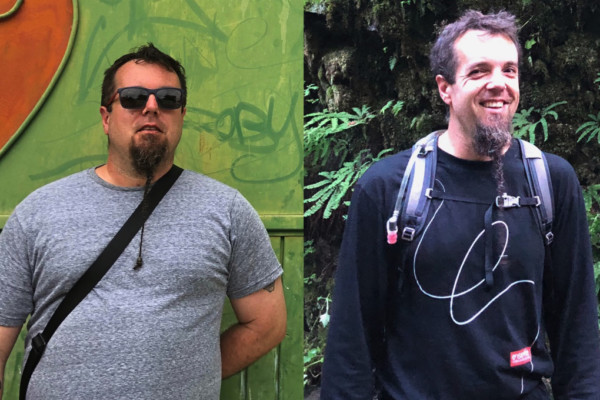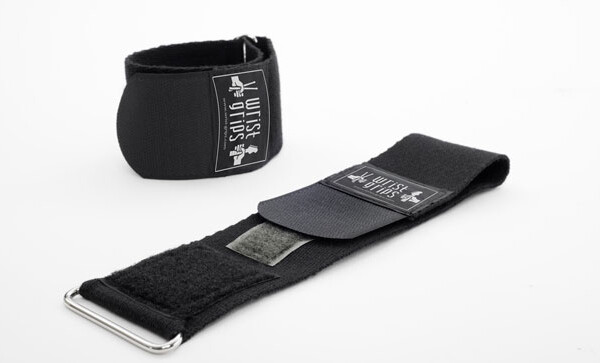Health & Fitness for The Working Bassist – Part 6: It’s All In Your Head
Never Mind — if It’s All in Your Head Your Mind Can Fix It
“It’s all in your head” is a phrase commonly used by physicians – publicly or privately – when they aren’t sure what is wrong with the patient because symptoms don’t fit in with a test performed or a question on the history form or within the parameters of a physical examination. This can be discouraging for a bassist who doesn’t know why they have pain and is seeking answers. This isn’t necessarily the physician’s fault; at times they are not trained in the skills necessary to determine which muscles are being used by the bassist as they ply their craft, how these muscles then affect other muscle groups, and why the bassist is having difficulty performing properly.
It is therefore easy to tell the patient to quit the offending activity – including playing the bass – because that will end the pain. But this is unsatisfactory to the bassist whose livelihood is on the line. If all else fails, the patient may be told it is all in their head. While this seems like a cop out, it is to some extent true. When you have pain that won’t go away, and your health care practitioners or teachers can’t explain the pain, it often affects your mind. The brain processes pain signals to tell your body you have pain, and stores this information in a manner where it can feed a vicious cycle, an endless loop between the physical manifestations of the body and the mind telling you (while there is nothing actually wrong) that there is something wrong. In these circumstances bassists are often plagued by self doubt. Commonly bassists faced with this situation may see a series of different practitioners and specialists and may get temporary or permanent relief without fully addressing the root cause of the discomfort being treated.
Many times, more physical problems result from stress built up from the worry over the pain. This is the sympathetic nervous system at work, which prepares the body for protection from harm, hence it being known as the ‘fight or flight’ syndrome. Initially this response protected us from saber tooth tigers; you saw the tiger coming for you, the body shunted blood from digestive and other processes and got it to your legs so you could run faster and longer and harder until you were free from harm.
Our modern saber tooth tigers are ourselves. A typical gigging bassist is on the go, often stressing out about all kinds of things like our relationships with band mates, other peoples’ driving skills, the state of the economy, difficulty with or a dislike of material to be performed, and so on. This creates stress, which manifests in the body, primarily the neck and shoulders. At times the body doesn’t know when to turn itself off. Thus the saber tooth tigers keep on coming as we worry and stress out more, which relates back to the bassist who can’t get a proper diagnosis of and solution to why it hurts in their arm, back, shoulder or wrist when playing, or after playing. Laypeople consulting the internet doesn’t always help matters, as a wrong diagnosis or no diagnosis given may encourage a bassist to draw their own conclusions, many times incorrectly and with more stress occurring as a result.
Mind Games — Let’s Calm and Control Our Minds
Previous columns have addressed many ways to avoid and deal with discomfort and pain as should be reviewed by bassists who want to maximize the level of satisfaction they can derive from playing and from life in general. Now let’s get into some head stuff. Everybody has heard about meditation, but this term means different things to different people. It should be simple: relax the mind. But how to do that? It can be as simple or as complicated as you want it to be.
For some of us, the word meditation can conjure up visions of shaving your head and lighting candles and going up to the mountaintop. So if the term bugs you, call it deep breathing technique, and let’s get on with that.
Practicing meditation helps you to slow down and make sense of everything. It helps to calm the mind by focusing on the present, not on the gig last night or the rehearsal tomorrow. Meditation is simply the process of sitting by yourself in a quiet place and concentrating on a single thing. This thing could be your breathing. Try listening to and feeling your breath enter into your body through the nose and exit through the mouth or the nose with your eyes closed and in a comfortable position. Optimally seated, this position could be in a chair, on the ground, with your legs crossed or sitting on a pillow. Lying down is okay too, but it is too easy to fall asleep in this position so it isn’t highly recommended. The point is to not get too wrapped up in the position or the ritual because this detracts from our objective which is to calm the mind, relax, and do away with stress and discomfort associated with it. Succeeding at this will help us as bassists because we will play in greater comfort with clearer minds—the perfect combination to being a fully contributing member to any sized musical unit.
One proven way to ease into the meditation process, once settled, is to count the breaths. Try inhaling through your nose for a count of three, then exhaling through the mouth for a count of five. By focusing on your breathing rhythm, taking slow, deep, regular breaths allows the mind to become quiet, tranquil and aware. While in this state the mind will be aware of sensations, images and surrounding activity but will be less prone to react to them. While these sensations go on in your mind and around you, they will pass through as you observe them and watch them come and go without you reacting to or becoming involved with them and you will attain and maintain a calm state of mind. Try doing this in different ways until you are comfortable, for example the breathing style I described above is merely a guide. Start out doing this for 5 minutes a day, and work your way up in 5 minute increments as you get more into the practice. Find your own way once you get started.
As this process continues, you will become more aware over time and recognize and identify physical sensations and trouble spots in your body, such as tight musculature that you didn’t know was tight until you stopped long enough to feel it. Such tightness will frequently be noticed in the neck, shoulders and upper back area, but can be anywhere. By focusing on these areas while maintaining your breath awareness, you’ll be able to relax these muscles, you will feel them relax and you’ll actually be able to will them to relax.
Making your muscles relax by concentrating on them can be done through visualization as well as meditation. It is easier to get in touch with your body through meditation. First, feel the tight tense areas in your body and consciously identify them. Then, by focusing on them specifically you will be able to make them relax in real time, while you are concentrating on them. If you know, through feeling, that your neck muscles are tight before a performance, find a place where you won’t be disturbed for several minutes and close your eyes and concentrate on these muscles. Breathe in deeply, drop the shoulders, feel the muscle inch by inch relax and feel the tension drain away. You can do this anywhere, anytime, but it is easier to do it by yourself in a quiet place.
Learning how to relax using meditation techniques will enhance the benefits enjoyed by eating healthfully, stretching and exercising , employing proper posture, and getting proper rest—meditation can complete the entire package for you and help support you playing at the top of your capabilities. When you are in tune with your body you will realize how to make it relax and what it means to relax, something many of us have never experienced. Get creative with this process—there is nothing to lose and lots to gain so have fun experimenting.
Visualization means just that. Learn some anatomy, and focus on particular muscles relaxing. Start at the fingertips and work your way up to the neck one body part at a time. Start with one finger and when it is relaxed go to the next one. The contrast will be dramatic between the relaxed areas and the ones that aren’t. Pretend there is a steam roller slowly going up your arm and pressing down on the muscles there, relaxing them as it goes slowly up or down.
Yoga Is As Yoga Does — Try It You May Like It
I just used that name because it was an Elvis song. Look it up if you don’t believe me.
Seriously, yoga is a great way to stay in shape and calm the mind. Briefly, yoga is a system of poses which coordinates breathing and physical activity and helps to relax the mind and body. There is lots of information out there on yoga, so look it up, take a class, see if it is right for you. Just in the past few weeks I have talked to Steve Bailey, David Ellefson, and Stu Hamm about yoga, and countless other bassists in the past. They benefit from it greatly, and so can you. Try it. If it’s not for you no harm done, but if you like it, practicing yoga will almost surely make a big difference in your personal and playing lives.
Other methods tapping into mind and body awareness include tai chi, sometimes called moving meditation, and massage always feel good and relaxes musculature in a way that allows you to feel relaxed and understand the tension the body is normally under and why it doesn’t have to be that way.
Bassist Mind & Body Recap:
- Try meditation. Watch and count your breaths and focus on the present, not the past or future. Stop obsessing about all manner of things and circumstances you cannot control — relax! Don’t get too wrapped up in ritual, just sit quietly.
- Try yoga to unite mind and body. There are so many yoga resources available today that you will have no trouble finding information, advice, and even yoga mats if you are inclined to give yoga a try.
- Try visualization to make the experience of meditation and muscle relaxation more immediate and real.
My take home message is to help you recognize that commonly problems of the body will be made worse by the mind, and they can also be made better by the mind. Through exploration of the mind + body relationship we can gain control over how the mind reacts to the body’s problems and vice versa. By learning how to better get in touch with both, one we will learn how to use each to support the other in contributing to a more satisfying physical, emotional, and mental life which all combine adding up to more enjoyment from and success with our lives as bassists.
As so many folks have said—we will get out of it what we put into it.
Keep playing smart and healthy, stretch, sit and stand up straight, eat right, exercise, and have fun!




Thanks for the tips – I notice I tend to take my body and mind for granted.
You are welcome Skip- and we all do.
Best,
Randy
awesome tips!
Thanks Nik-
Best,
Randy
This entire series has been incredibly informative. I’m looking forward to getting home to my bass and putting a lot of these suggestions into practice! Thank you!